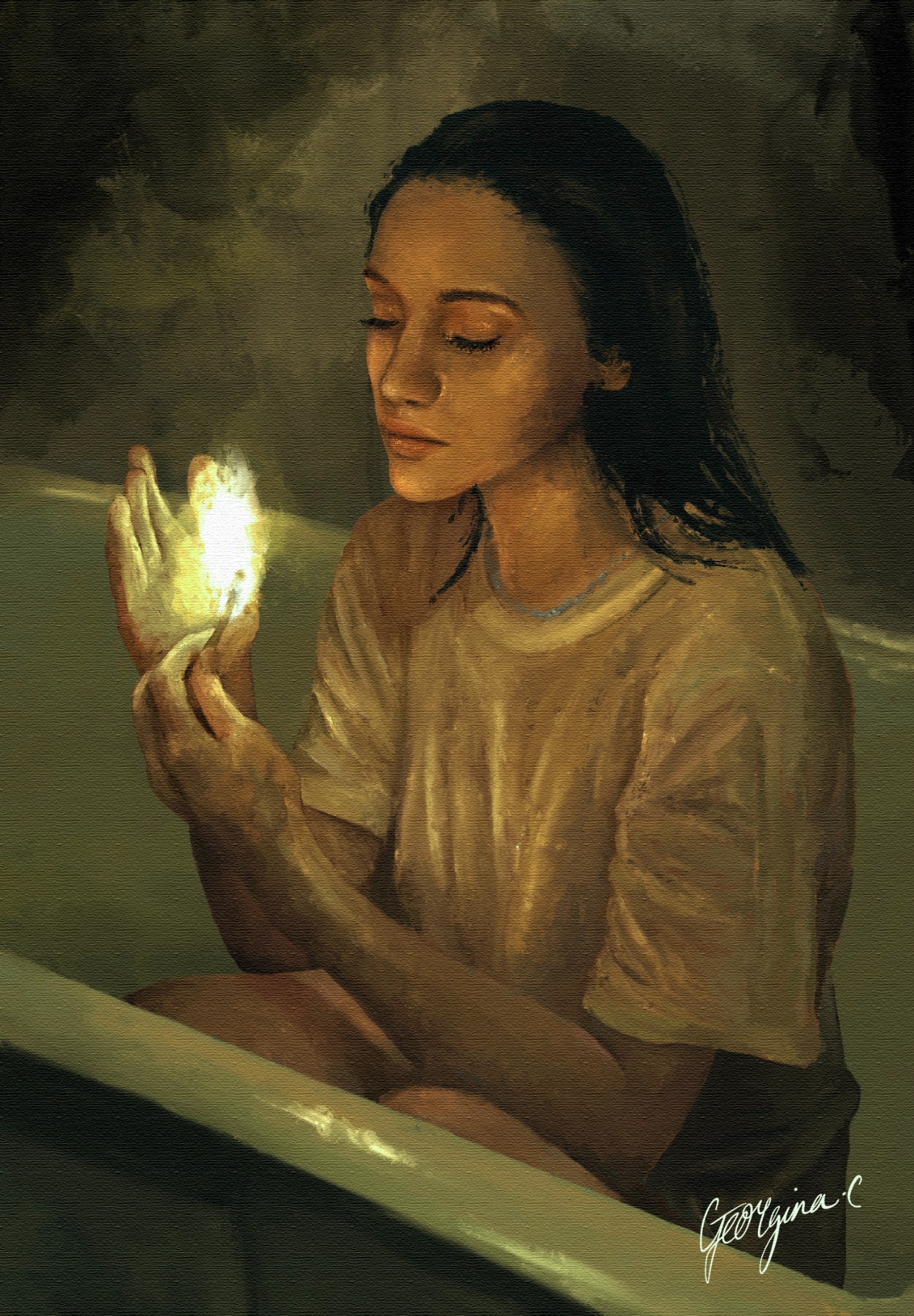
Ardere (2023)
Ardere (2023) explores the quiet tension between destruction and renewal. Drawing on Baroque chiaroscuro and contemporary emotional realism, Georgina M. Cox portrays a woman cradling a flame; a symbol of inner transformation and endurance. The work reflects on the act of burning not as ruin, but as reclamation; a moment where pain becomes light and self-understanding takes form.
⤷ When I created Ardere, I wanted to capture that fragile, private moment where pain becomes light. The title comes from the Latin ardere — to burn — which felt like the most honest word for the feeling I was trying to paint. It’s about the kind of inner fire that doesn’t destroy you outright, but quietly reshapes you.
The painting shows a solitary figure seated in a bath, holding a small flame between her hands. She isn’t frightened of it; she’s studying it, almost communing with it. I liked the contradiction of that imagery: something dangerous made gentle by the act of understanding it. The scene isn’t literal; it’s psychological. The bath becomes a vessel, a containment of emotion, and the flame represents what happens when inner turmoil finally manifests as light.
Ardere sits within my broader exploration of emotional rebirth and the aesthetics of endurance. In many of my works, I draw on Baroque lighting — chiaroscuro, intimate interiors, the play of gold against shadow — but I use it to express contemporary emotional states rather than religious ones. Here, the illumination doesn’t come from a divine source but from within the subject herself. The warmth on her skin is both the evidence and aftermath of survival.
Formally, I kept the palette close to earth: muted ochres, soft greens, a restrained glow. The darkness around her is deliberate — it’s not emptiness, but quiet. The light she holds doesn’t fill the room; it fills her. That distinction mattered to me. The concept of transformation here isn’t grand or cinematic — it’s small, human, and almost secret.
Thematically, the piece is about introspection and the paradox of healing: how something can hurt and soothe at once. It also continues my interest in reclaiming depictions of feminine pain. Historically, women’s suffering in art was often framed as spectacle or sacrifice. In Ardere, she owns the burn — she contains it. It’s an act of agency disguised as stillness.
In essence, Ardere is a meditation on the quiet side of survival. It’s about tending to your own light, even when it flickers.
0 Comments Add a Comment?